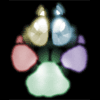
My badger (Bruce) and I on a recent Sunday morning at our favorite spot...one of those places where not everyone knows your name, but the waitresses know what you're gonna drink. He thinks I'm weird. Do you?
Category Story / Portraits
Species Cockatrice
Size 120 x 119px
File Size 5.5 kB
As a skunk, I think I can say with some authority that the ad was intentionally placed upside down, so people with attention to detail would notice it more than the others. Since he's a realtor, people with attention to detail also make better tenants, because they're less likely to leave a mess, or leave holes in properties. ^_~
...Oh, I can't say with authority? Can I say it with impunity? ...No? I guess saying it with dignity is out, too...
Okay, so I'll just say it as a guess. ^_^
...Oh, I can't say with authority? Can I say it with impunity? ...No? I guess saying it with dignity is out, too...
Okay, so I'll just say it as a guess. ^_^
It was either be a professor, or be some castle-dwelling clan's mascot and heraldry model! And usually those kinds of folks want something majestic, like a dragon or a gryphon, or something fierce and free, like a boar or a bear. There isn't much demand for basilisks (sniff)...
It isn't a Greek myth, but a lot was written in Greek and Latin about them; they are one of those animals that people were certain existed--like gryphons and dragons.
It started out as a snake (the name in Greek means "Little King" and it was considered the king of snakes) that was so poisonous, just looking at it killed you.
At some point, their description started to pick up legs...usually more than four. During the middle ages, when Europe was gaga for old Greek scholars, the myth changed again and what they got was what is usually known now as a cockatrice..they added a cool origin story and gave the creatures a few rooster-ish parts (sometimes just the head, sometimes other features).
Cockatrices figure more prominently in heraldry than basilisks do, but since they are different versions of one myth (I like to point people to dragons and wyverns), I use the words somewhat interchangably. This tends to confuse people who only know about them from D&D or other RPGs.
It started out as a snake (the name in Greek means "Little King" and it was considered the king of snakes) that was so poisonous, just looking at it killed you.
At some point, their description started to pick up legs...usually more than four. During the middle ages, when Europe was gaga for old Greek scholars, the myth changed again and what they got was what is usually known now as a cockatrice..they added a cool origin story and gave the creatures a few rooster-ish parts (sometimes just the head, sometimes other features).
Cockatrices figure more prominently in heraldry than basilisks do, but since they are different versions of one myth (I like to point people to dragons and wyverns), I use the words somewhat interchangably. This tends to confuse people who only know about them from D&D or other RPGs.

 FA+
FA+













Comments